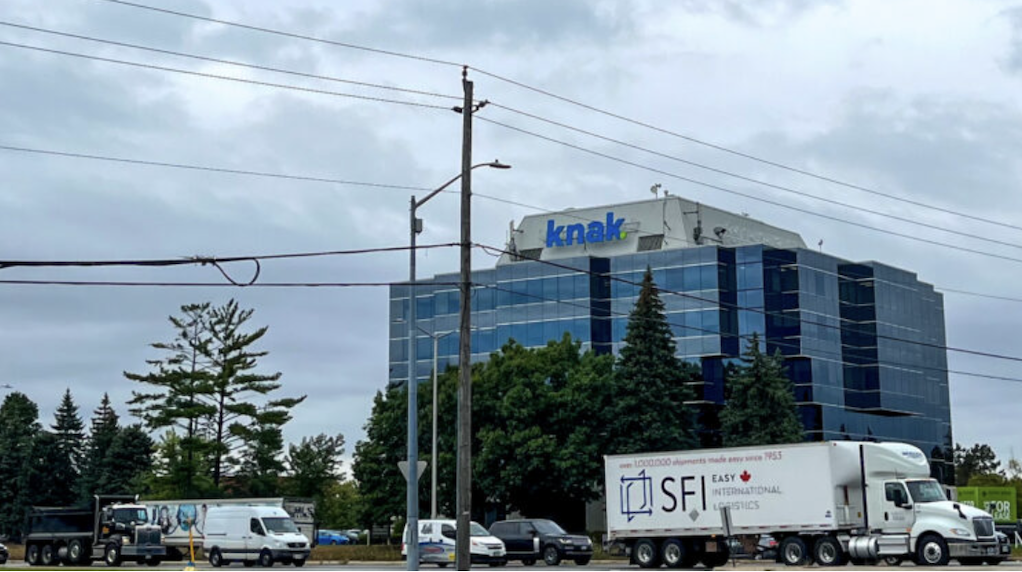Since the federal government’s return-to-office mandate took effect on Sept. 9, Ottawa’s streets have become more congested, pushing commuters to seek alternatives to avoid long delays.
As public transit struggles to keep pace and traffic worsens, more commuters appear to be turning to cycling, carpooling and walking.
The government’s new hybrid work policy requires requires thousands of public servants to work in-person at their offices at least three days a week, with executives to be on-site four days a week.
Finley Somres, an employee at Joe Mamma Cycles bike shop on Bank Street, said many customers have mentioned the traffic snarls.
“Probably most of the bikers have been commuting by bikes because the parking is bad and the traffic is an issue,” Somres said.
While new bike sales have stayed steady at Joe Mamma Cycles, maintenance services are booming. “There’s been a lot of maintenance work, not so much people buying new bikes, but definitely more repairs,” Somres added.
Jose Bray, the owner of Joe Mamma Cycles, said he believes that there has been a “huge surge in ridership over the past few years, but it’s hard to pinpoint the reason.”
This interactive map displays 39 bike repair stations in the City of Ottawa.
Bray notes that many new cyclists took up the sport during COVID-19. With return-to-office, Bray has also noticed that “the lack of reliable public transit has led people to trust their bikes more than public transit.”
The Ottawa Bike Café at 79 Sparks St. has also reported more customers over the past couple weeks. A café representative said the shop has served customers with regular bikes and e-scooters.
The traffic situation has prompted other creative solutions from federal workers and full-time students.
Some of my coworkers are choosing to come in really early to avoid rush hour. Although not encouraged, I’ve heard some employees are coming to work early and then leaving before rush hour and continuing to work when they get home.
Justin Gileno, federal bureaucrat
A worker at the Department of Justice, Justin Gileno, commutes from Manotick to downtown. “I am carpooling with a neighbour and when he is not available, I drive myself downtown and pay for parking. To save money, I park in Chinatown for $10 and walk 1.5 kilometres to the office to avoid paying $22 closer to my office,” he said.
Gileno said he has noticed significant increases in traffic since the federal mandate, especially on Tuesdays, Wednesdays, and Thursdays, prompting him and his colleagues to adjust their schedules to avoid rush hour traffic.
In Gileno’s office, employees can choose which days to come in, while in other workplaces, staff are required to stick to fixed in-office days.
“Some of my coworkers are choosing to come in really early to avoid rush hour. Although not encouraged, I’ve heard some employees are coming to work early and then leaving before rush hour and continuing to work when they get home,” he said.
Gileno says some of his colleagues bike or walk to work, which, he points out, will be more difficult in winter.
The push toward alternative commuting methods is not limited to government workers. At Carleton University, students have made the move.

Aerospace Engineering student Jasper Stronghill says he has noticed an increase in cycling among his peers. Stronghill has been biking in Ottawa for 17 years, “ever since the training wheels came off,” and is now part of the Quick Cranks bike shop cycling team. He bikes to campus for class frequently.
“I’ve noticed more people biking around campus than last year.”
Emma Jarvis, a communications and media studies major at Carleton, walks, bikes or takes the bus, depending on the day.
As winter approaches, Ottawa’s commuters will soon find out if these creative solutions can weather the storm.




